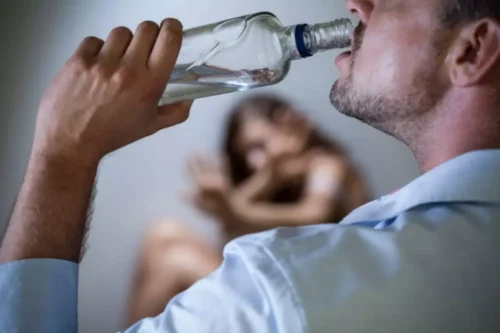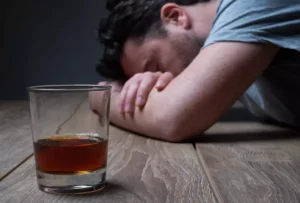
In this section, we provide a brief overview of benzodiazepine misuse across the developmental spectrum. The most effective treatment for benzodiazepine use disorder is to gradually reduce how much of the drug you use under the supervision of a medical professional. You can do this in a treatment facility or hospital, or at home with the help of your doctor. Benzodiazepines, sometimes called benzos, are a type of medication known as tranquilizers.

Benzodiazepine Use or Misuse
- Additionally, these patients are more likely to have comorbid substance use disorders and anxiety disorders so it can be harder to find an efficacious treatment for their withdrawal symptoms [68].
- Pregnant women and fetuses are at increased risk for adverse effects of withdrawal; they both metabolize BZD slowly, and the drug can cross the placenta to cause concentrations to build up to significant levels in the neonate [18].
- The most frequent primary abuse drugs are opioids and/or alcohol; benzodiazepines are misused to enhance the other drug’s euphoric effects, reduce the unwanted effects of drugs, such as insomnia due to stimulant use, and alleviate withdrawal symptoms between doses [45].
- Consistent definitions of benzodiazepine misuse are needed to determine cross-national differences in the prevalence of misuse, as well as the impact of benzodiazepine availability and regulations on misuse.
The requirements led to a disproportionate reduction in prescribing to low-income and minority subpopulations and also led to a greater reduction in appropriate prescribing. Stringent requirements impeded access for appropriate medical use.53-56 Health care providers and lawmakers must be cautious when implementing laws and strategies to tackle prescription drug abuse to avoid hindering appropriate care. Taken together, these misuse findings raise questions about the underlying contributors to misuse as defined and identified in NSDUH. Younger adults are more likely to lack health insurance (30), while the most common reasons for misuse (e.g., to relax/relieve tension) were all reasons for which a clinician might prescribe a benzodiazepine or refer for behavioral treatment. A significant proportion of the NSDUH-defined “misuse”, therefore, could reflect use for untreated symptoms among those with poor access to care—specifically behavioral treatments for insomnia (31, 32) or anxiety disorders (33, 34).
Benzodiazepine Side Effects
They are used for immediate symptom relief of anxiety, epilepsy and other seizure disorders, spasticity from CNS pathology, catatonia, sleep disorders such as insomnia, and withdrawal from alcohol and other BZDs [3]. Chronic use of BZDs has been linked to a decline in cognitive function, increased risk of dementia and dementia-like illnesses, and impaired sensory and motor function in the elderly, as well as aggressive behavior and expressive anger in a subset of consumers [15,75]. Many medications have been tested to alleviate withdrawal symptoms and make it easier for patients to discontinue BZD since a gradual taper does not always lead to successful discontinuation of the drug. Currently, a gradual taper with clonazepam is used as maintenance therapy for BZD-dependent patients. However, it still carries the risk for abuse and dependence since this is also a BZD, albeit a slow-acting one [67].
4. The How and Why of Benzodiazepine Misuse: Sources, Patterns, and Motives
In addition, longitudinal studies will help to determine the temporal associations between benzodiazepine misuse and potential consequences (e.g., suicidality, poor physical health). Such studies would inform the development of screening tools to identify people at the highest risk for benzodiazepine misuse and the identification of factors that may be important targets for the prevention and treatment of benzodiazepine misuse. The beta-blocker propranolol has shown mixed severe benzodiazepine withdrawal syndrome results when it comes to treating BZD withdrawal and dependence. One study found that propranolol attenuated some withdrawal symptoms in patients who stopped taking either diazepam (a long-acting BZD) and those who took lorazepam (a short-acting one) abruptly [69]. However, in the same study, 27–45% of patients experienced withdrawal symptoms even while taking propranolol [69]. The control group and the experimental group had the same dropout rate in this study [69].
- Benzodiazepines are also incredibly effective at rapidly aborting convulsant activity in those with epilepsy or other seizure disorders [5].
- Lockdown has also resulted in a lot of online browsing about potential drugs of abuse.
- This analysis is limited to the 10,290 respondents who specifically reported benzodiazepine use in response to the tranquilizer and sedative items (see online Appendix for additional detail).
- Some people also use them to try to ease the comedown from cocaine or other stimulants.
- Your health care professionals know you best, so talk to them if you have questions or concerns about risks of taking benzodiazepine medicines.

This information is for educational and informational purposes only and is not medical advice. This information contains a summary of important points and is not an exhaustive review of information about the topic. Always seek the advice of a physician or other qualified medical professional with any questions you may have regarding medications or medical conditions.

Prescribing interventions, substitution, psychotherapies and pharmacotherapies all contribute to the management of benzodiazepine dependence. There is therefore a need to develop a better evidence base and treatment paradigm for these patients. Current treatment for withdrawal is through tapering with clonazepam, and overdose should be treated with flumazenil [67]. There is room in the research body for further exploration into alternative methods of treating withdrawal that does not include the BZD itself. This call to action proves especially relevant, as those seeking treatment for BZD dependence and withdrawal are on the rise in the United States [3].

Always consult your healthcare provider to ensure the information displayed on this page applies to your personal circumstances. All methods were carried out in accordance with Preferred Reporting Items for Systematic Reviews and Meta-Analyses guidelines (PRISMA; Moher et al., 2015). See Supplementary Materials for additional details on methods, including search terms, inclusion criteria, and data extraction methods. If you’re uninsured or under-insured, SAMSA can refer you to state-funded treatment programs, programs that accept Medicare or Medicaid, and those that charge on a sliding scale. If you have health insurance, your insurer can give you a list of providers and facilities covered by your plan.
- Future research is warranted for further exploration into alternative methods of treating BZD withdrawal.
- One study showed that replacing BZD with a 45 day captodiamine led to a decrease in severity of withdrawal symptoms in patients taking BZD for six months [70].
- Future studies separating these different forms of misuse are also needed to determine their relative clinical significance.
- Learn why addiction recovery is a life-long commitment and how addiction impacts families.

The COVID-19 pandemic has caused a disruption of the availability of critical mental health services and as a result many people may have faced an increase in the use of alcohol and drugs [1]. Benzodiazepines may have a high potential for abuse and misuse during the pandemic [43], and they are typically co-abused in patients with substance use disorders [44]. The most frequent primary abuse drugs are opioids and/or alcohol; benzodiazepines are misused to enhance the other drug’s euphoric effects, reduce the unwanted effects of drugs, such as insomnia due to stimulant use, and alleviate withdrawal symptoms between doses [45].
Noch kein Kommentar, Füge deine Stimme unten hinzu!